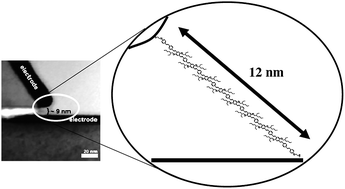Conjugated 12 nm long oligomers as molecular wires in nanoelectronics†
Abstract
We demonstrate a generic synthetic approach to oligophenylenevinylene (OPV) derivative molecules with a molecular length of up to 12 nm and a relatively free choice of end group that can attach to different electrodes such as metallic gold or potentially transition metal


 Please wait while we load your content...
Please wait while we load your content...